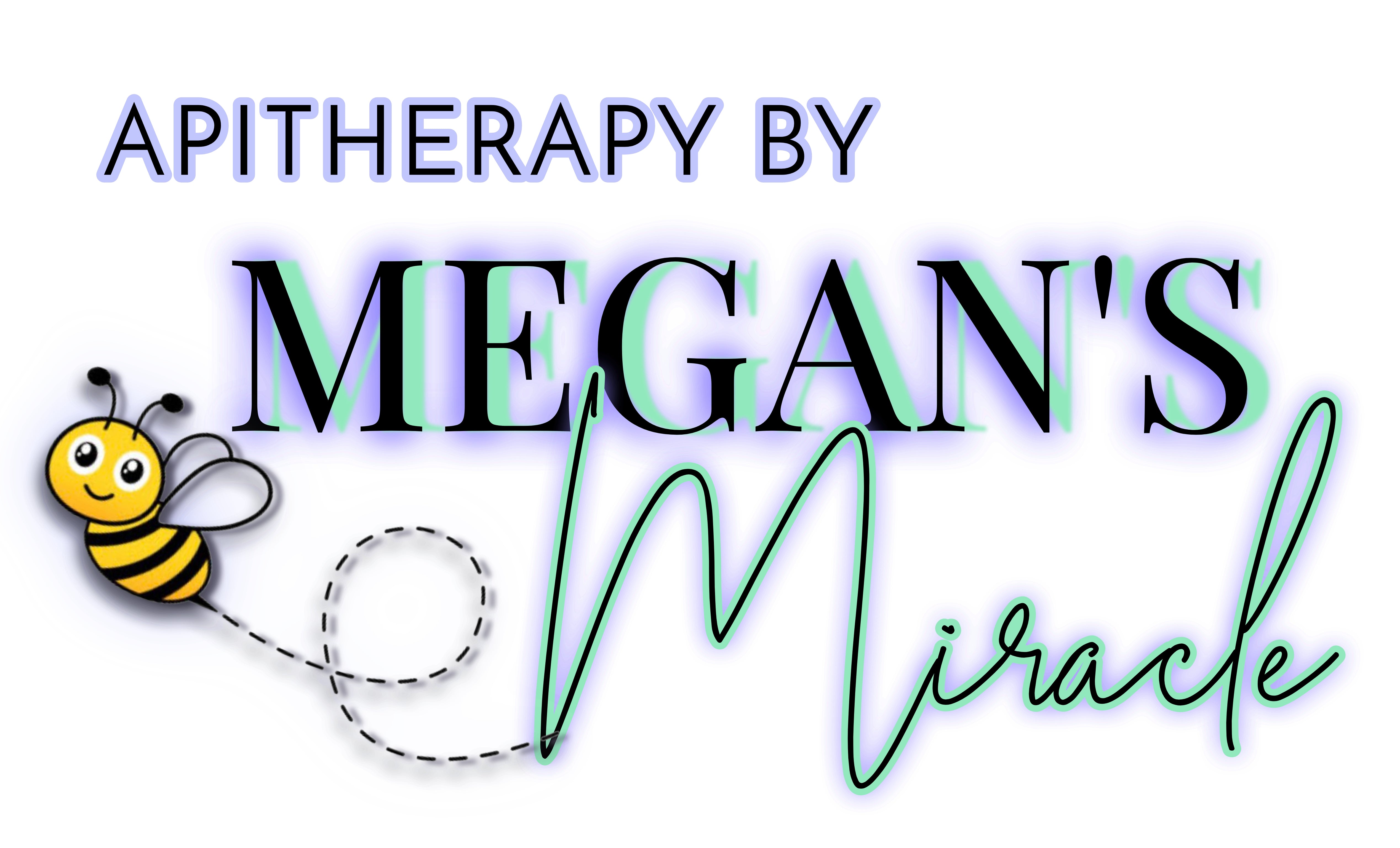The Missing Link in Chronic Illness: How the Vagus Nerve and Lymphatic System Work Together to Support Healing
You May Have Been Looking for Wellness in All the Wrong Places
If you're living with chronic illness — especially complex conditions like Lyme disease, Morgellons, or long-haul infections — you're probably familiar with frustration. Lab tests, prescriptions, protocols... and still no relief. What if the missing link isn't in another pill, but in two deeply connected systems that regulate immune function, inflammation, detox, and nervous system health?
Meet the vagus nerve and the lymphatic system — two powerful, under-recognized players in chronic illness recovery.
The Vagus Nerve: Your Inflammation Regulator
The vagus nerve is the longest cranial nerve in your body. It connects your brain to your heart, lungs, digestive tract, and immune system — acting as a master regulator of parasympathetic tone (“rest and digest”).
One of its most important roles is activating the inflammatory reflex, which calms systemic inflammation by releasing acetylcholine. This, in turn, signals immune cells to reduce the production of pro-inflammatory cytokines like TNF‑α.
In conditions like Lyme disease, where neuroinflammation is common, restoring vagal tone can reduce symptoms such as:
Brain Fog
Low vagal tone may reduce cerebral oxygen delivery and increase neuroinflammation, impairing cognitive function.
The glymphatic‑lymphatic pathway clears neurotoxins and metabolic waste; when sluggish, it contributes to fog.
Anxiety or Panic
The vagus nerve helps regulate the parasympathetic “rest-and-digest” state; when underactive, the “fight-or-flight” system dominates.
Gut inflammation and microbiome imbalances, tied to vagal dysfunction, can disrupt neurotransmitters like serotonin.
POTS (Postural Orthostatic Tachycardia Syndrome)
POTS reflects autonomic imbalance, where vagal dysfunction impairs heart rate and blood pressure regulation upon standing.
Inflammation or compression of lymphatic/vascular pathways can worsen circulatory instability.
GI Dysfunction
The vagus nerve directly controls gut motility, enzyme and bile secretion, and immune surveillance in the digestive tract. Disruption leads to slow digestion and dysbiosis.
Impaired intestinal lymphatic drainage (e.g., via lacteals) may prevent proper fat and toxin clearance.
Immune Dysregulation
The cholinergic anti-inflammatory pathway (mediated by the vagus nerve) suppresses pro-inflammatory cytokines like TNF‑α via acetylcholine signaling.
When lymph flow is blocked, the immune system remains overloaded from retained waste and microbial debris Stimulating the vagus nerve through non-invasive practices (or in some cases, devices) has shown promising results in reducing chronic inflammation and improving immune resilience.
Exploring the Lymphatic System: The Silent Detoxifier
The lymphatic system runs parallel to the circulatory system, but its role is entirely different — and vital. It moves lymph fluid through a vast network of vessels, nodes, and organs like the tonsils, spleen, and thymus, filtering out toxins, pathogens, metabolic waste, and cellular debris along the way.
Detoxification Unveiled: A Key to Chronic Illness Recovery
As lymph flows through the body, it is filtered by lymph nodes, where immune cells (like macrophages and lymphocytes) neutralize harmful materials. From there, the cleaned fluid enters the thoracic duct, the body’s largest lymphatic vesse, which empties into the left subclavian vein near the heart. This reintroduces the now-filtered lymph, into the bloodstream, where waste is further processed by the liver and kidneys. Ultimately, all that debris is then excreted through urine, stool, sweat, or breath. Much better thn stright out through the skin, regardless of where its located, or what might be in its path, causing 'mystery pain' anywhere in the body.
If this drainage pathway becomes blocked or sluggish, toxins remain trapped in tissues, fueling inflammation, fatigue, swelling, and immune confusion.
What Happens When the Lymphatic System Slows Down?
A sluggish lymphatic system doesn’t just delay detox — it creates a feedback loop of immune dysfunction, inflammation, and worsening symptoms.
Here’s what that looks like in detail:
1. Toxins Stay Trapped, Worsening Inflammation
The lymph system filters and moves waste out of tissues. When blocked:
-
Debris and metabolic waste linger in cells, keeping them inflamed.
-
The immune system stays on high alert, causing more cytokine release.
-
Acid buildup and low oxygen further stress tissues, contributing to pain, skin flares, and neuroinflammation.
2. Die-Off Symptoms Increase During Treatment
When you begin an effective protocol including antimicrobials or bee venom:
-
Pathogens die, but their remains (endotoxins, fragments, viral debris) still need to be removed.
-
If lymph flow is stagnant, these waste products accumulate, triggering Herxheimer reactions, sometimes extremely severe and causing many to quit when they are so close to the end of treatment.
-
You will likely feel worse at times — headaches, anxiety, rashes, flares — not because you’re getting sicker, but because you’re not draining.
3. Swelling, Skin Eruptions, and Fatigue Become Persistent
Without lymph flow:
-
Fluids pool in tissues, leading to puffiness or swelling in the face, neck, abdomen, or extremities.
-
The body tries to detox through the skin, causing rashes, sores, or fiber eruptions (common in Morgellons).
-
Energy plummets as the immune system diverts all resources to cleanup — fatigue worsens, especially in the mornings or after exertion.
4. The Immune System Gets Overwhelmed
The lymph system is where immune cells process and filter threats. When it’s congested:
-
Old immune debris builds up in lymph nodes, which lose effectiveness.
-
The immune system swings between overreacting (autoimmunity, histamine flares) and underreacting (infections, reactivations).
-
Without lymph movement, no protocol can fully regulate the immune system — it becomes disorganized and confused. In my particular case, I've been stuck in persistent Herxheimer state due to so many aggressive treatments killing organisms, and no way for my body to clear any of it. Treating the Lymphatic system immediately, prior to initaiting kill portions of a protocol, is therefore, highly recommended.
That means, essentially a person can be suffering from Lyme for decades without ever having a positive blood test result! I am certain those of you reading this who experienced that type of 'mystery illness' situation know the absolute despair that comes with repeatedly being left with no answers.
Not one western medicine practitioner, or even a head physician at a top NYC Hospital's New Integrative Medicine Department, ever suggested addressing my clearly sluggish lymphadic system and certainly didn't mention the Vagus Nerve at all.
The reality is, supporting lymph flow is non-negotiable for people with high toxic loads, like those with Lyme, Morgellons or co infections, long haul viral loads and countless neuropathic illnesses — yet it's often ignored right from the start, by primary care physicians.
Why These Two Systems Are So Connected
These systems are structurally different, but functionally linked:
-
The diaphragm, which houses the vagus nerve, is also the primary pump for lymphatic circulation.
-
Deep diaphragmatic breathing activates both systems simultaneously.
-
Reduced inflammation via vagus stimulation eases lymphatic load.
-
Better lymph flow clears inflammatory debris, reducing the vagus nerve’s stress burden.
It’s a two-way feedback loop — and it’s often broken in chronic illness.
Signs of Vagus and Lymph Dysfunction in Chronic Illness
You may be dealing with dysfunction in these systems if you experience:
-
Unexplained anxiety or dissociation
-
Persistent fatigue even after detox
-
Swelling in lymph nodes or face
-
Flare-ups during full moons or weather shifts
-
Cognitive dysfunction, even time loss
-
Inability to sweat, cry, or regulate temperature
These are not random. They are urgent signals. As always, please listen to your body no matter what anybody tells you.
Simple Ways to Stimulate the Vagus Nerve and Move Lymph
Tips to address the Vagus-Lymph healing axis
These gentle tools support your body’s two most underappreciated healing systems — the vagus nerve and the lymphatic network — without pharmaceuticals or harsh interventions.
Targeted Support Tips for Each Symptom
These are easy practical tools that many patients with Lyme, Morgellons, and chronic immune dysfunction have used to support the vagus-lymph healing axis:
Brain Fog — Clear the Static and Noise
-
Diaphragmatic breathing (slow inhale through the nose, expanding the belly) improves oxygen delivery to the brain and activates the vagus nerve.
-
Use a gentle exfoliant, ideally something multi-effective, like Snow Polysaccharide Powder or using TCM Gua Sha tools and methods, on the scalp and jawline to open lymphatic drainage around the head. Tools and products will come with specific instructions that should be followed carefully. For example, lymphatic drainage requires a much lighter touch than one might expect. It's Not exfoliation of skin cells, it is about the movement of the lymph cells.
-
Take full body movement breaks (even small ones) every hour to gently stimulate glymphatic flow and cerebral circulation.
-
Consider castor oil packs over the liver to support detox without overwhelming the system.
Anxiety or Panic — Calm the Alarm System
-
Gargle water vigorously or humming low tones to stimulate the vagus nerve’s throat branch.
-
Apply a cold compress to the back of the neck or upper chest (collarbone area) to activate the parasympathetic system.
-
Dry brush the upper chest and underarms to support thoracic lymph movement, which can relieve heart-pounding and vagal strain.
-
Avoid high-histamine foods or triggers during flares, as histamine buildup worsens nervous system irritation.
POTS — Stabilize the System
-
Start mornings with ankle pumps and leg stretches before standing to encourage blood flow.
-
Use compression socks, if appropriate, to reduce blood pooling in the lower body.
- Manual Lymphatic Drainage (MLD) is a gentle, rhythmic skin‑manipulation technique that nudges lymph toward existing drainage pathways—helping to clear upper‑body congestion in areas like the jawline, neck, and thoracic region by stimulating lymph flow back into circulation. When focused on the lower abdomen and thighs can improve vascular return.
-
Try vagal toning exercises (like exhaling slowly through pursed lips) during positional changes to reduce tachycardia.
GI Dysfunction — Activate the Digestive Reflex
-
Do slow belly breathing before meals to “prime” the vagus nerve and improve motility.
-
Apply gentle circular massage around the navel to stimulate gut movement and local lymphatics.
-
Use bitter herbs (e.g., gentian, dandelion) to encourage digestive enzyme and bile release, if tolerated.
-
Try castor oil packs or magnesium citrate at night to encourage regular elimination without strain.
Immune Dysregulation — Reset the Response
-
Alternate warm/cool showers or use contrast hydrotherapy (warm → cool → warm) to increase lymph flow and vagus stimulation.
-
Use Snow Poly or lymph support tools over the sternum and neck to open upper-body drainage pathways.
-
Practice intentional stillness — like guided meditations or forest bathing — to signal safety to the immune system.
-
Work with binders and drainage tools PRIOR to initiating Kill protocols to reduce immune overwhelm from die-off.
Targeting Each Integral System On Thier Own
To Support the Vagus Nerve:
-
Deep Belly Breathing
Techniques like box breathing or 4-7-8 breathing help activate the parasympathetic nervous system. Slow, rhythmic breathing into the belly calms the brain and improves vagal tone. -
Cold Showers or Compresses
Applying cold to the face or neck triggers the diving reflex — a vagus-driven reset that lowers heart rate, reduces stress, and supports immune regulation. -
Gargling, Humming, or Chanting
These vocal exercises stimulate the vagus nerve via the throat, larynx, and vocal cords — key branches in vagal anatomy. They can, again, shift your nervous system out of survival, or Fight or Flight mode. -
Somatic or Trauma-Informed Therapy
Body-based therapies help discharge stored trauma patterns that keep the vagus nerve locked in hypervigilance. Restoring nervous system safety supports all downstream healing. Practicing Trauma Based Yoga is extremely beneficial - search for a specialty trained practitioner. -
Craniosacral Touch or Neck Massage
Light manual work around the skull base, jaw, or neck fascia can release vagal constriction and improve both lymph drainage and neurological symptoms.
To Support Lymphatic Flow:
-
Dry Brushing
Use a natural bristle brush on dry skin, stroking gently toward lymphatic exit points (like the collarbone or underarms). This stimulates surface lymph movement and circulation. -
Rebounding or Light Bouncing
Even a few minutes a day of gentle bouncing — on a mini-trampoline or your feet — activates the one-way valves in the lymph system, especially in the legs and pelvis. -
Manual Lymphatic Drainage (MLD)
This soft-touch massage technique supports flow through lymph vessels and nodes. It’s especially helpful when drainage is blocked in the neck, abdomen, or jawline. -
Hydration with Trace Minerals
Lymph fluid needs more than plain water — it needs electrolytes. Adding sea salt or mineral drops improves cellular hydration and lymph mobility. -
Detox Support Tools
Lymph flow improves when detox pathways are open. This includes nutritional support (like glutathione or binders), physical movement, fascia release, and skin detox tools like Snow Poly Powder*.
How Megan’s Miracle Supports Vagus-Lymph Healing in Chronic Illness
At Megan’s Miracle, we work with patients providing protocol and product along with much needed health coaching throughout their experience. Most have come after repeatedly being told their symptoms are “in their head” — but who know in their bodies and souls, that something deeper than the medical community is prepared for nor willing to acknowledge, is wrong. Our protocol is built to repair the immune system, revive vagal tone, and drain the toxins that traditional medicine ignores.
Power of Function: Snow Poly Powder*
A gentle, non-toxic exfoliant that helps draw pathogenic waste, biofilm, and toxins out through the skin while stimulating lymphatic flow.
Used with circular massage or gua sha tools, it's ideal for scalp, jawline, and inflamed lymph points. Megan's Miracle is committed to findind and providing ancient as well as new* ingredients and techniques to constrantly improve symptoms and cures for even the most confounding illnesses. Every one deserves this effort, to feel better, to live.
Our protocol combines:
-
Apitherapy (bee venom without keeping bees)
-
Detox and nervous system repair
-
Vibration-based tools
-
Trauma-aware emotional support and health coaching
Explore the full Megan’s Miracle Protocol:
megansmiracle.com/protocol
Science Backs This — Even If Doctors Don’t Always Acknowledge or Understand It
There’s now well-established research showing that the vagus nerve directly influences immune activity and inflammation, and that the lymphatic system is responsible for clearing the toxic burden that fuels chronic illness. When either system is dysregulated — which is common in Lyme, Morgellons, and related conditions — the body can't detox, self-regulate, or heal efficiently. The body is stuck in a hellish loop. I speak from experience.
Supporting these systems isn’t about being trendy or “alternative.” It’s biological necessity — and it’s long overdue in chronic care protocols.
Start Moving What’s Stuck-CTA
If this blog resonated with you — don’t just close the tab.
Pick one thing. One breath. One lymph drainage technique. One small change.
Your body is asking to be heard. Please, at least YOU Respond.
Try dry brushing before your shower.
Try box breathing when your thoughts race.
Try gargling or humming when your jaw feels tight.
Try Snow Poly Powder on, or exfoliating your scalp or jawline when the pressure builds.
When you're ready to really turn things around, reach out to people who understand your language, and without raising an eyebrow. Most importantly, listen to what your body is telling you.
These aren’t fringe hacks. They’re biology-backed tools your body already understands — it’s just been waiting for you to remember.
Begin helping yourself, with the tips listed above, or dive deeper with the full protocol at Megan's Miracle.
Start Here
You're not just managing symptoms.
You're reclaiming your nervous system.
And your lymph knows the way out of the maze.
Just by being here,
You are Brave.
You are Strong.
And you are Not alone.
Be well,
Xoxo
Meredith Finegold




1 comment
Excellent article! Thank you!